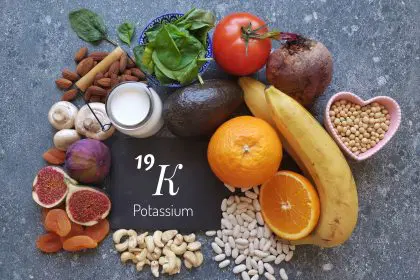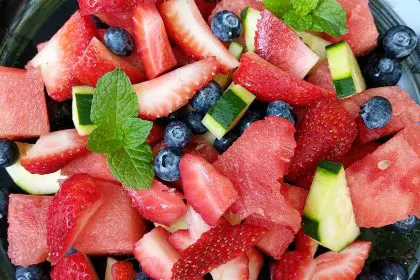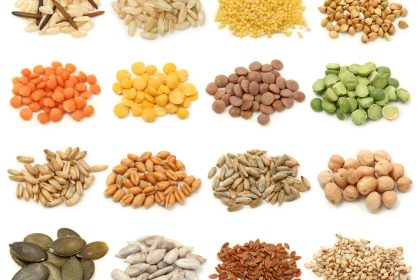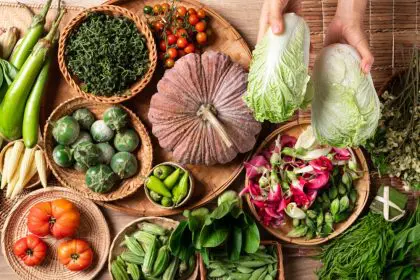Blended beverages have become the go-to solution for busy people seeking nutritious meals on the move. These colorful concoctions promise convenience, flavor, and health benefits all wrapped into one portable package. Unfortunately, many well-intentioned dieters unknowingly create calorie bombs that derail their fitness progress instead of supporting it.
The allure of smoothies lies in their perceived simplicity and health benefits. Toss some fruit into a blender, add liquid, and voila – instant nutrition. However, the reality often involves hidden calories, missing nutrients, and blood sugar spikes that leave you hungrier than before. Understanding these common pitfalls can transform your blended beverages from diet saboteurs into powerful weight loss allies.
Modern lifestyle demands have made smoothies increasingly popular as meal replacements and snacks. Social media platforms overflow with colorful smoothie bowls and Instagram-worthy drinks that promise miraculous health transformations. Yet behind these appealing presentations often lurk nutritional imbalances that can stall weight loss progress for weeks or months.
Missing the protein foundation
- Protein deficiency represents the most critical error in smoothie preparation. Without adequate protein, your carefully crafted beverage becomes little more than flavored sugar water that spikes blood glucose levels and crashes shortly after consumption. This roller coaster effect triggers hunger pangs and cravings that can lead to overeating later in the day.
Protein serves multiple functions beyond muscle building. It stimulates the production of hormones that signal fullness to your brain, creating lasting satisfaction that prevents mindless snacking. Additionally, protein requires more energy to digest than carbohydrates or fats, slightly boosting your metabolic rate throughout the day.
The absence of protein also affects blood sugar stability. When you consume carbohydrates without protein or fiber, glucose enters your bloodstream rapidly, causing insulin levels to spike. This hormonal response promotes fat storage and creates an energy crash that leaves you reaching for more food within hours of finishing your smoothie.
Quality protein sources for smoothies include unsweetened protein powders, which offer concentrated nutrition without excess calories. Greek yogurt provides both protein and probiotics that support digestive health. Collagen peptides dissolve completely and add protein without affecting taste or texture.
Overlooking fiber’s importance
- Fiber neglect creates another significant obstacle to weight loss success. This indigestible plant component slows gastric emptying, meaning food stays in your stomach longer and provides sustained energy release. Without adequate fiber, even protein-rich smoothies may leave you feeling unsatisfied and prone to overeating.
Fiber also plays a crucial role in blood sugar management by slowing the absorption of glucose into your bloodstream. This gradual release prevents the dramatic spikes and crashes associated with high-sugar beverages, maintaining steady energy levels throughout the morning or afternoon.
The fermentation of fiber by beneficial gut bacteria produces short-chain fatty acids that support metabolic health and may influence weight management. These compounds help regulate appetite hormones and improve insulin sensitivity, both crucial factors for successful weight loss.
Incorporating fiber-rich ingredients requires thoughtful selection of fruits and vegetables. Berries provide excellent fiber content along with antioxidants, while leafy greens add nutrients without significantly impacting taste. Nuts and seeds contribute both fiber and healthy fats that enhance satiety.
Falling for store-bought traps
- Commercial smoothie selection often prioritizes taste and visual appeal over nutritional balance. Many popular smoothie chains create beverages that contain more sugar than several cans of soda, often exceeding 100 grams per serving. These sugar bombs can easily contain 500-600 calories while providing minimal protein or fiber.
The marketing around commercial smoothies emphasizes their fruit content and natural ingredients, creating a health halo effect that obscures their true nutritional profile. Consumers often assume these beverages are automatically healthy choices, overlooking the extensive use of fruit juices, syrups, and sweeteners that drive up calorie content.
Reading nutrition labels becomes essential when purchasing pre-made smoothies. Look for options that provide at least 15 grams of protein and 5 grams of fiber while keeping sugar content below 25 grams. Many healthier options use whole fruits and vegetables as primary ingredients rather than juices or purees.
The convenience factor of store-bought smoothies can also lead to frequent consumption without considering their caloric impact on daily intake. A 400-calorie smoothie consumed as a snack rather than a meal replacement can quickly contribute to weight gain over time.
Inadequate meal replacement planning
- Insufficient calories and protein in meal replacement smoothies often backfire by triggering compensatory eating later in the day. A 200-calorie smoothie lacking adequate protein will leave most people hungry within two hours, leading to larger portions or additional snacks that exceed the calories saved.
Effective meal replacement requires careful attention to macronutrient balance and total caloric content. Most adults need at least 400-500 calories for breakfast or lunch to maintain energy levels and prevent overeating at subsequent meals. This caloric target should include 20-25 grams of protein to promote satiety and muscle maintenance.
The timing of meal replacement smoothies also affects their success. Consuming them too early in the morning without adequate protein and fat can lead to mid-morning energy crashes and cravings for high-calorie foods. Planning smoothies as part of a structured eating schedule improves their effectiveness for weight management.
Creating balanced meal replacement smoothies requires including ingredients from multiple food groups. Combine protein sources with healthy fats, complex carbohydrates from fruits or vegetables, and fiber-rich additions to create a nutritionally complete meal.
Sugar overload concerns
- Excessive added sugars transform potentially healthy smoothies into dessert-like beverages that promote weight gain rather than loss. Many recipes call for honey, maple syrup, dates, or other sweeteners that significantly increase caloric content without providing satiety benefits.
The natural sugars in whole fruits differ from added sweeteners because they come packaged with fiber, vitamins, and minerals that slow absorption and provide nutritional value. However, even natural fruit sugars can become problematic when concentrated through juicing or when multiple high-sugar fruits are combined in a single serving.
Added sugars contribute to insulin resistance over time, making weight loss increasingly difficult as your body becomes less efficient at processing carbohydrates. These sweeteners also trigger reward pathways in the brain that can lead to cravings and overconsumption of high-calorie foods throughout the day.
Reducing smoothie sweetness gradually allows your taste buds to adapt to less intense flavors while maintaining enjoyment. Start by reducing added sweeteners by half, then eliminate them entirely as you become accustomed to the natural flavors of fruits and vegetables.
Juice base mistakes
- Fruit juice foundations dramatically increase sugar and calorie content while eliminating the beneficial fiber found in whole fruits. A cup of orange juice contains nearly as much sugar as a can of soda but lacks the filling properties that make whole oranges satisfying.
Using juice as a smoothie base essentially creates a concentrated sugar delivery system that bypasses many of the body’s natural satiety mechanisms. The rapid absorption of these sugars can trigger insulin spikes and subsequent hunger pangs that undermine weight loss efforts.
Water remains the most neutral smoothie base, allowing the flavors of added ingredients to shine while keeping calories minimal. Unsweetened plant-based milks like almond, coconut, or oat milk provide creamy texture with moderate calorie additions and often include added nutrients like calcium and vitamin D.
The liquid-to-solid ratio in smoothies affects both texture and satiety. Using minimal liquid creates thicker consistency that requires more conscious consumption, potentially increasing feelings of fullness compared to thin, juice-like beverages.
Healthy fat neglect
- Missing healthy fats represents a frequently overlooked component that can significantly improve smoothie satisfaction and nutritional value. Fats slow gastric emptying and enhance the absorption of fat-soluble vitamins like A, D, E, and K from other smoothie ingredients.
Small amounts of healthy fats can transform a smoothie’s staying power without dramatically increasing calories. One tablespoon of almond butter adds approximately 100 calories but provides sustained energy and satisfaction that may prevent snacking for hours.
Avocado creates incredibly creamy texture while providing monounsaturated fats that support heart health and hormone production. Despite concerns about its caloric density, the satiety benefits often outweigh the additional calories by preventing overeating later in the day.
Nuts and seeds offer both healthy fats and additional protein while contributing interesting textures and flavors. Chia seeds expand when mixed with liquid, creating a pudding-like consistency that enhances satiety. Ground flaxseed provides omega-3 fatty acids along with lignans that may support hormonal balance.
Creating weight loss friendly smoothies
Success with smoothie-based weight management requires viewing these beverages as complete meals rather than simple drinks. Each smoothie should contain balanced macronutrients that work together to provide sustained energy, satisfaction, and nutritional support for your weight loss goals.
Planning smoothie ingredients in advance prevents impulsive decisions that might compromise nutritional balance. Preparing ingredient portions ahead of time streamlines the blending process while ensuring consistent nutritional content across multiple servings.
Experimenting with different ingredient combinations keeps smoothies interesting while maintaining nutritional integrity. Rotating protein sources, varying fruit and vegetable selections, and trying different healthy fat options prevents boredom and ensures diverse nutrient intake.
The key to smoothie success lies in treating them as tools within a comprehensive weight management strategy rather than magic solutions. When properly constructed with attention to protein, fiber, healthy fats, and reasonable portions, smoothies can absolutely support your weight loss journey while providing convenient, delicious nutrition.













